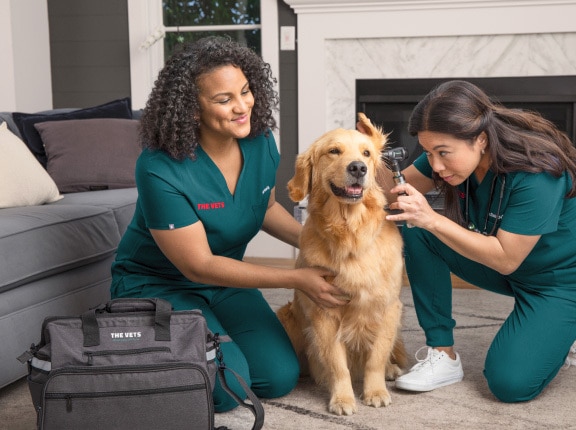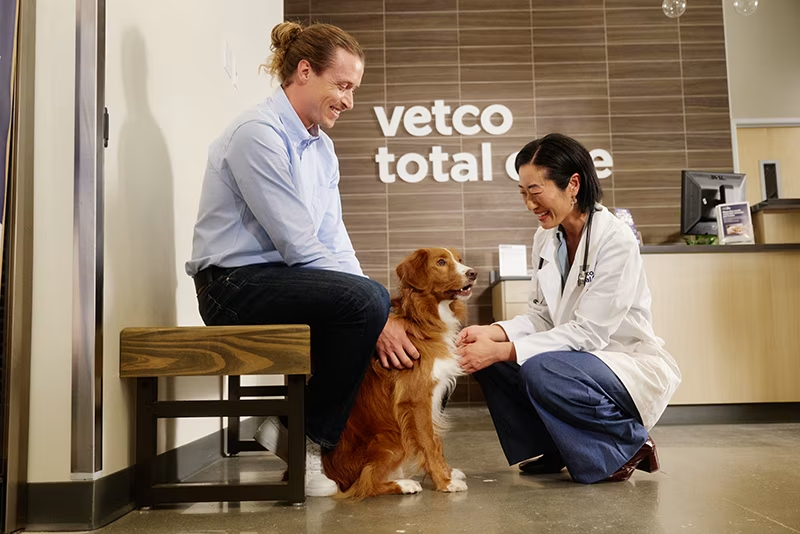A Veterinarian’s Insight Into Long-Term Outcomes of tplo surgery
A Veterinarian’s Insight Into Long-Term Outcomes of tplo surgery
Blog Article
Why Animal Rehabilitation Is Important: the Benefits of Vet Providers for Your Pet's Recuperation
Animal recovery is an essential element of healing for pets dealing with injuries or impairments. Veterinary solutions provide critical assistance with tailored rehabilitation plans that resolve individual demands. These plans typically include discomfort administration, physical therapy, and dietary advice. Comprehending the different facets of animal rehabilitation can illuminate its value in enhancing recovery results. What certain advantages do these services use, and just how can they transform a family pet's recovery trip?
Comprehending Animal Recovery
Pet rehabilitation incorporates a series of therapeutic practices focused on recovering the wellness and capability of damaged or disabled animals. This field incorporates various methods, consisting of physical treatment, hydrotherapy, and work-related treatment, customized to fulfill the particular requirements of each animal. Rehabilitation specialists assess a pet's condition, establishing individualized therapy plans that may include exercises to strengthen muscles, enhance mobility, and enhance general wellness. The process not only concentrates on physical recuperation but also addresses psychological and behavioral aspects. Animals often experience stress and stress and anxiety complying with an injury, making psychological wellness considerations necessary in rehabilitation. By developing a supportive atmosphere, therapists can aid animals restore their self-confidence and adjust to their new scenarios. Via normal sessions, pets can experience considerable enhancements, eventually resulting in a better lifestyle. Generally, comprehending animal rehabilitation highlights its significance in advertising recovery and improving the bond in between family pets and their owners.
The Function of Discomfort Monitoring in Healing
Exactly how essential works pain monitoring in the recovery of hurt pets? It plays an important role in helping with recovery and enhancing the total health of family pets. Correct pain monitoring not just minimizes pain however likewise promotes flexibility, enabling animals to join rehab activities essential for healing. When discomfort is effectively handled, animals often tend to respond positively to treatment, causing quicker rehab outcomes.Veterinarians use numerous approaches to analyze and deal with pain, consisting of medicines, acupuncture, and alternate treatments. By tailoring pain administration methods to the individual requirements of each pet, veterinarians can assure that pets continue to be calm and participating throughout their healing journey. Minimizing discomfort assists reduce stress, which can prevent healing and prolong recovery times. To summarize, reliable discomfort administration is important for enhancing the recuperation process and enhancing the high quality of life for damaged pets.
Physical Treatment Methods for Pets
Various physical therapy methods are readily available to assist in the rehabilitation of animals recouping from injuries or surgeries (veterinary cardiologist near me). These strategies can boost wheelchair, eliminate discomfort, and advertise healing. Healing workouts, as an example, help strengthen muscle mass and boost joint feature, enabling animals to regain their physical capabilities gradually. Hand-operated treatment, which consists of massage therapy and mobilization, can minimize stress and improve blood circulation, contributing to a faster recovery.Other methods such as passive series of movement exercises urge joint adaptability and minimize tightness. Furthermore, electric stimulation therapy may be utilized to promote nerves and muscular tissues, promoting recovery and pain relief.Veterinary specialists commonly tailor these methods to each family pet's certain needs, making sure a complete rehab plan. By implementing these physical therapy methods, pets can experience enhanced lifestyle and a more successful recovery from their conditions. The combination of these practices right into rehab programs is essential for ideal healing results
Benefits of Hydrotherapy for Rehabilitation
Hydrotherapy uses considerable benefits in pet rehab, specifically in improving flexibility. This water-based treatment promotes pain alleviation while offering comfort to hurt or recovering family pets. Furthermore, it promotes strength-building exercises that add to general physical healing.
Boosted Mobility Enhancement
As pets recoup from injuries or surgical procedures, boosted flexibility typically comes to be a main objective of their rehabilitation. Hydrotherapy works as an important tool in accomplishing this goal. With water-based exercises, pets can participate in low-impact activities that help with joint flexibility and enhance muscles without the anxiety of weight-bearing activities. The buoyancy of water sustains their bodies, enabling boosted array of motion and movement improvement. Additionally, hydrotherapy encourages much better equilibrium and sychronisation, which are important for bring back normal motion patterns. Routine sessions can bring about considerable progress in a pet's physical capabilities, inevitably boosting their high quality of life. This strategy not just help in recuperation yet also advertises an extra active and meeting lifestyle post-rehabilitation.
Discomfort Alleviation and Comfort

Remedy for discomfort is an essential aspect of animal rehabilitation, and hydrotherapy substantially adds to this process. By utilizing water's buoyancy, hydrotherapy reduces joint tension and eases discomfort throughout activity. This therapeutic approach provides a comforting atmosphere where pet dogs can involve in mild workouts without the complete weight of their bodies influencing their recuperation. The cozy water stimulates blood flow, advertising recovery while additionally encouraging relaxation. Additionally, hydrotherapy sessions can be customized to satisfy the specific needs of the animal, ensuring suitable convenience. As pets experience lowered discomfort and enhanced convenience levels, their overall desire to take part in recovery activities commonly boosts, leading to a more effective recovery journey. Subsequently, hydrotherapy functions as an important tool in enhancing pain alleviation and convenience during rehabilitation.
Toughness Structure Workouts
Strength-building exercises play an important role in the recovery process, with hydrotherapy offering special benefits. This form of therapy utilizes water resistance to enhance muscular tissue strength without putting excessive strain on the joints. The buoyancy of water supports the family pet's weight, enabling much Our site safer activity and enhanced range of movement. In addition, hydrotherapy can enhance cardiovascular wellness and advertise overall physical fitness, aiding in quicker healing from injuries or surgeries. The regulated atmosphere also minimizes the danger of reinjury, making it an ideal option for family pets requiring rehab. Regular hydrotherapy sessions can cause recognizable enhancements in mobility, stamina, and endurance, inevitably improving the pet dog's quality of life and capability to return to typical tasks.
Significance of Customized Rehabilitation Plans
Personalized rehabilitation strategies are crucial for addressing the unique needs of each pet, ensuring individualized therapy techniques. These plans enable effective development monitoring and essential changes, cultivating perfect healing end results. In addition, a holistic strategy can boost the overall wellness of the animal, advertising a more thorough rehabilitation experience.
Individualized Therapy Approaches
While numerous recovery programs take on a one-size-fits-all method, the unique demands of each animal demand customized treatment prepare for ideal healing. Custom-made rehab strategies think about various elements, consisting of the animal's types, age, case history, and specific injuries or conditions. By tailoring interventions, veterinarians can attend to each animal's distinct obstacles, optimizing the efficiency of the rehabilitation procedure. Individualized plans might incorporate different techniques such as physical treatment, hydrotherapy, and restorative workouts, guaranteeing that the therapy straightens with the animal's capabilities and progress. In addition, individualized techniques foster a stronger bond in between the pet dog and the caregiver, advertising an extra engaging and helpful recovery environment. Inevitably, individualized treatment is important for attaining finest possible results in pet low income animal hospital recovery.
Progression Monitoring and Adjustments

Holistic Recovery Techniques
All natural healing techniques are necessary for efficient animal recovery, as they emphasize the significance of personalized therapy strategies tailored to each animal's details requirements. This technique takes into consideration the physical, emotional, and ecological elements impacting healing. Customized rehabilitation plans may consist of a mix of physical treatment, nutritional counseling, and behavior adjustments. By resolving these diverse elements, vets can improve the overall health of the animal and advertise a faster healing. Additionally, such customized methods promote a deeper understanding of the pet's special challenges, leading to much more effective interventions. Inevitably, holistic recuperation strategies not just enhance physical wellness yet likewise contribute to the animal's mental and psychological security, ensuring a thorough rehab experience.
The Influence of Nutrition on Recuperation
Nutrition plays a necessary duty in the recovery process for fixing up pets, often determining the speed and effectiveness of healing. A healthy diet plan offers the needed nutrients that sustain cells repair, boost the immune system, and enhance general vitality. Protein is particularly crucial, as it aids in muscular tissue rebuilding and recuperation from injuries. Vital fatty acids, vitamins, and minerals also add to reducing inflammation and promoting optimum mobile function.Veterinarians often emphasize the relevance of customized nourishment plans, considering each animal's particular needs, age, and wellness status. Correct hydration is similarly essential, as liquids promote nutrition absorption and assistance in cleansing. By making sure that pet dogs get proper nutrition, caregivers can considerably improve their chances of an effective recovery, causing far better lasting health results. Inevitably, nutrition offers as a foundational component in the rehabilitation trip, supporting pets in restoring strength and durability post-injury or ailment.
Success Stories: Family Pets That Flourished After Rehab
Successful recovery tales abound, showcasing the strength of family pets who have actually gotten rid of substantial obstacles. Take, for instance, Bella, a gold retriever that experienced serious injuries from a car mishap. With devoted veterinary care and an extensive recovery program, she regained her wheelchair and returned to her lively self, much to her proprietor's joy. Max, an elderly pet cat identified with arthritis, experienced remarkable renovation via a mix of physical treatment and pain management. His newly found agility allowed him to appreciate his favorite sunbathing spots again. Another inspiring case is that of Coco, a rescued greyhound who got over anxiety through behavior modification and socialization strategies, allowing her to flourish in her brand-new home. These success tales exemplify the transformative power of animal rehabilitation, stressing that with the right support, animals can not just recoup yet lead fulfilling lives, enhancing the bonds they share with their households.
Regularly Asked Concerns
For how long Does the Recovery Refine Normally Take for Pet Dogs?
The rehabilitation procedure for pet dogs commonly differs based on the injury or condition, varying from a couple of weeks to numerous months. Individual development, therapy type, and dedication to workouts significantly influence the total period of healing.
Are There Any Dangers Related To Animal Recovery?
Pet rehab may lug threats such as exacerbation of injuries, improper strategies resulting in discomfort, or not enough surveillance throughout healing. These elements can prevent development and affect the total effectiveness of the recovery process.

Can All Pets Take Advantage Of Rehabilitation Providers?
Not all animals check my blog might need rehabilitation, yet several can benefit substantially. Rehabilitation services can enhance mobility, ease pain, and boost general health, particularly for those recovering from injuries, surgeries, or persistent conditions.
Exactly How Can I Prepare My Pet for Recovery Sessions?

What Indicators Show My Pet Demands Rehab?
Indications suggesting a pet dog may need rehab include trouble walking, limping, lowered task levels, unwillingness to leap, or indications of discomfort. Observing these behaviors can trigger proprietors to look for specialist examination and therapy for their pet dogs.
Report this page